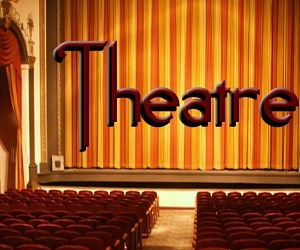The writer and performer of Horripilation!, John Sowle, is unquestionably a shining light in the fields of research and preservation of obscure global theatrical traditions, as well as being an imposing performative figure in the relating and embodiment of these same traditions. In 1973, with a Fulbright fellowship to research a doctoral thesis in dramatic art, he spent time at the Kerala Kalamandalam in southern India, where he was obliged to rise each morning at 3 a.m. in order to begin his day’s grueling training in traditional dance movement and actorly craft. Kept on his feet for hours at a time, in a highly repetitive form of dance stepping, his relief would come finally in the form of a massage administered by his teacher (asan), who would walk up and down his back while he lay in a formally controlled position. It should come as no surprise that classical traditions of drama and dance, wherever they originate, involved a regimen of severe physical hardship and mental discipline, but the sharing of these events in the performance by Mr. Sowle, as he reproduces the exercises nearly forty years later, is quite something to witness.
He is telling us about the southern Indian tradition of Kutiyattam, and of the Natya Shastra of Bharata, an ancient text on the rules and aesthetics of theater – a medium itself imparted to humankind as a divine gift because its sacred deviser would not entrust the gods with such a potent form of diversion. The historical and mythic dimensions of the tradition are complex and rich, and as involved as the formal rites, rules, and roles of the drama are exhaustive. Alone on stage, in traditional Indian garb, Mr. Sowle enumerates some of the primary categories of consideration as to theatrical principles: for the erection of a theater, the composition of such, the qualities requisite in an actor, and the physical language of actorly expression. He demonstrates for us as he does so, at one point marching out into the auditorium with a length of rope in order to show the necessary dimensions required in establishing both the performance space, and the audience space. Indeed, and not surprisingly, there are rules that extend to the audience too, as to their composition, number, and receptiveness. In many ways we are witnessing a form of cultural archaeology.
As he speaks, gestures, and dances, the actor casually moves the minimal props around the space, and matter-of-factly attires himself in various parts of his costume and make-up. He segues easily into excerpted scenes from classical epics of sanskrit, demonstrating the formalized expressions and gestures he has introduced to us. Short of an enticing image of himself as a young man, cycling in the hours before dawn, through monsoon rains to classes, he does not deliver any personal content. Indeed, at the heart of the Kutiyattam tradition is the notion of a non-empathic experience on the part of the audience, a learned, highly abstracted and aestheticized appreciation of the codified artifice of performance. Mr. Sowle here seems uninterested in breaking with this tradition. To whit, at the end of the show I felt like I had been attending a highly informative lecture that made imaginative use of demonstration. I did not feel I had witnessed a dramatic performance. If I had anticipated attending an educational presentation, I might have been a little more prepared to sound the depths of my considerable ignorance. As it was, I felt a little cheated out of my expectation of a moment of imaginative catharsis. Consciously or unconsciously, we come to theater with our own inherited expectations of in what a drama should consist.
Mr. Sowle does have one great “dramatic” trump card in this piece, which he plays to perfection right at the conclusion. Horripilation, a word we should all adopt into our vocabularies, is a term describing the upward movement of the hairs on our skins on account of goosebumps stimulated by something observed. In Kutiyattam, all performers should be capable of producing this effect in their audience. For the jaded audiences of the present, it sounds like a tall order. But eerily, almost quietly, the actor creates just this effect in the final five minutes of his show as, fully painted and costumed in high finery, he becomes an extraordinary character while dancing in a quaint, exotic manner, eye and head movements formally observing the codes he has related. You were looking at something quite other, quite riveting. I didn’t check to see if I had goosebumps but, for several minutes together, I was experiencing something quite beyond them.
~~~
Horripilation! was featured as part of the Times Square International Theater Festival at the Roy Arias Studios & Theatres located at 300 W. 43rd St, NY, NY.
~~~
Horripilation!Written and performed by John Sowle
Director: Steven Patterson Roy Arias Theatre Center
300 W. 43rd St, NY, NY








{ 2 comments… read them below or add one }
I just want to thank Geoffrey for such a wonderful, insightful review of Horripilation! He really seems to have “got” it, and for that I am grateful and delighted. Even down to his point that it was in fact a lecture demonstration rather than an actual theatre piece, about theatre rather than being theatre. My goal was more to inform than to move, though I hope that the theatrical elements had resonance and the thrill of discovering a mostly unknown source of rich theatrical tradition has its own excitements and rewards.
I was searching the Dictionary for a synonym of goosebumps and bumped into this review of Horripilation. Wonderful commentary. Makes me want to attend and be part of it. Coming from a state adjacent to Kerala, I feel even more drawn to it.